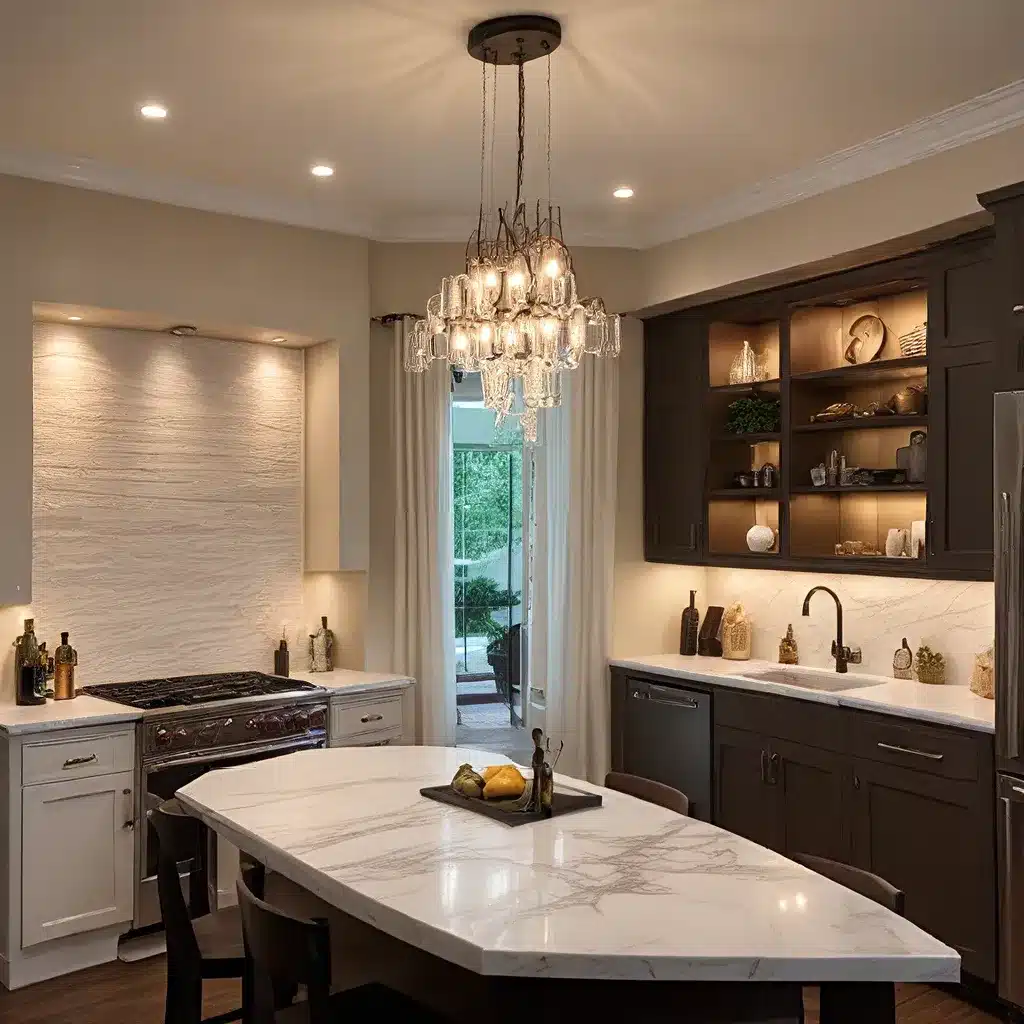
Unlocking the Power of Lighting in Interior Design
Lighting is a fundamental element in any well-designed interior, elevating the ambiance, highlighting key features, and creating a sense of depth and dimension within a space. As homeowners and design enthusiasts seek to elevate their living environments, the strategic use of layered lighting has emerged as a powerful tool to transform ordinary rooms into extraordinary havens.
In this comprehensive guide, we’ll explore the nuances of layered lighting, delving into the different types of illumination and how to masterfully combine them to achieve a truly captivating and functional interior. Whether you’re a seasoned design professional or a homeowner eager to revamp your space, this article will equip you with the knowledge and inspiration to create a luminous and visually striking environment.
Mastering the Layers of Light
Lighting in interior design can be divided into three distinct categories: ambient, accent, and task lighting. Understanding the role and characteristics of each type is crucial in crafting a cohesive and visually engaging space.
Ambient Lighting
Ambient lighting serves as the foundation of your lighting plan, providing the overall illumination for a room. This type of lighting enhances visibility, sets the tone, and creates a sense of warmth and comfort. Examples of ambient lighting include recessed lights, chandeliers, and pendant fixtures. By ensuring a consistent and well-distributed level of brightness, ambient lighting lays the groundwork for the other layers of light to shine.
Accent Lighting
Accent lighting is used to highlight specific features or focal points within a room, adding depth, drama, and visual interest. This type of lighting is often employed to showcase artwork, architectural details, or distinctive furniture pieces. Accent lights, such as wall sconces, track lighting, or directional spotlights, help to create a sense of hierarchy and draw the eye to desired elements in the space.
Task Lighting
Task lighting is designed to illuminate specific work or activity areas, ensuring visibility and functionality. These types of lights are commonly found in kitchens, home offices, and vanity areas, providing focused illumination to support daily tasks and enhance productivity. Examples of task lighting include under-cabinet lights, desk lamps, and adjustable reading lights.
By strategically layering these three types of lighting, you can create a harmonious and visually captivating interior that serves both functional and aesthetic purposes.
Crafting a Luminous Atmosphere
The art of layered lighting lies in the careful balance and integration of these various lighting elements. To achieve a cohesive and visually striking design, consider the following strategies:
Balance and Proportion
When planning your lighting scheme, it’s essential to maintain a sense of balance and proportion. Ensure that the size, scale, and placement of your lighting fixtures complement the room’s dimensions and architectural features. This harmonious balance will prevent any single lighting element from dominating the space, creating a visually coherent and aesthetically pleasing environment.
Complementary Finishes
The finish and style of your lighting fixtures play a crucial role in enhancing the overall design aesthetic. Choose fixtures that seamlessly integrate with your existing decor, whether it’s a modern, minimalist look or a more traditional, ornate style. Coordinating the finishes of your lighting elements, such as brushed brass, matte black, or polished chrome, will unify the space and create a cohesive visual flow.
Zonal Lighting
Dividing your interior into distinct lighting zones can help you achieve a layered and dynamic effect. By strategically placing ambient, accent, and task lighting in specific areas, you can guide the eye, create visual interest, and ensure that each zone serves its intended purpose. This zonal approach allows you to tailor the lighting to the specific needs and activities of each space, resulting in a functional and visually captivating interior.
Dimmability and Flexibility
Incorporating dimmable lighting fixtures into your design plan empowers you to adjust the intensity of illumination and set the perfect mood for any occasion. Whether you’re entertaining guests, hosting a cozy movie night, or simply unwinding at the end of the day, the ability to control the light levels allows you to create a dynamic and adaptable environment that caters to your changing needs and preferences.
Integrating Natural Light
Seamlessly blending natural and artificial light is a hallmark of exceptional interior design. By strategically positioning windows, skylights, and other natural light sources, you can harness the power of daylight to enhance the overall luminosity and ambiance of a space. This harmonious integration of natural and artificial lighting can create a sense of openness, depth, and visual harmony that elevates the entire design.
Elevating Your Space with Layered Lighting
Mastering the art of layered lighting can transform a mediocre interior into a space that exudes sophistication, functionality, and visual appeal. By thoughtfully combining ambient, accent, and task lighting, you can craft an environment that is not only aesthetically pleasing but also tailored to your specific needs and lifestyle.
As you embark on your journey to enhance your living space, consider collaborating with a professional interior designer from Urban Grace Interiors Inc. Their expertise in lighting design, space planning, and luxury finishes can elevate your vision and ensure a cohesive, harmonious, and truly remarkable result.
So, embrace the power of layered lighting and unlock the depth, dimension, and radiance that can elevate your home into a sanctuary of style and sophistication.

